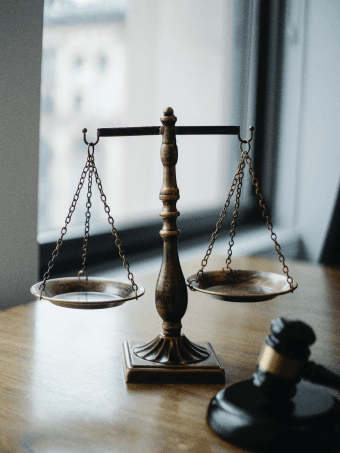Understanding Trademark Clearance Searches
A trademark clearance search, also known as a trademark availability search is a comprehensive investigation that assesses the availability and registrability of a proposed trademark. This search aims to determine whether the mark is already in use by others or is pending registration with the relevant intellectual property authorities. Undertaking a trademark clearance search before adopting a mark is crucial to avoid potential legal and financial implications that may arise from infringing on another party's rights.
Trademark clearance searches are typically conducted by experienced intellectual property attorneys that have the expertise to navigate various databases and sources, including national and international trademark registries, domain name databases, business directories, and common law databases.
The Importance of Conducting a Trademark Clearance Search
Avoiding Infringement
One of the primary reasons for conducting a trademark clearance search is to avoid infringing on the rights of others. If a business adopts a mark without conducting a search, it may inadvertently use a name or logo that is similar or identical to an existing trademark owned by another company. Such infringement can lead to costly legal disputes, damages, and potential rebranding efforts, tarnishing the company's reputation.
Protecting Brand Investment
Branding is an essential aspect of building a company's identity and goodwill. Investing in a trademark without conducting a clearance search can be a risky endeavor, as it may lead to the loss of substantial resources and marketing efforts if the mark is later found to be unavailable for use.
Ensuring Registrability
Registering a trademark with the relevant authorities provides additional legal protections and benefits. However, not all marks are eligible for registration. Conducting a clearance search allows businesses to assess whether their proposed mark meets the registration criteria and minimizes the risk of having the application rejected.
Minimizing Litigation Risks
Trademark litigation can be a time-consuming and costly affair. By conducting a clearance search, businesses can identify potential conflicts early on and make informed decisions regarding the adoption of a mark, reducing the likelihood of facing litigation in the future.
Components of a Comprehensive Trademark Clearance Search
A robust trademark clearance search involves the examination of various sources to provide a comprehensive analysis of the availability of a proposed mark. Key components of such a search include:
Registered Trademarks: Checking national and international trademark registries for existing registrations that are identical or similar to the proposed mark. This is a crucial step as registered trademarks typically carry stronger protection than unregistered marks.
Pending Trademark Applications: Identifying trademark applications that are still under review by the relevant trademark offices. A pending application can become a registered trademark, potentially causing conflicts for the proposed mark.
Similar and Phonetic Matches: Searching for marks that are phonetically or visually similar to the proposed mark. Even minor differences in spelling or pronunciation may not be enough to avoid infringement issues.
Takeaway
Trademark clearance searches are an indispensable initial step in brand protection. They provide businesses with critical insights into the availability and registrability of proposed trademarks, helping them make informed decisions and avoid potential legal pitfalls. By identifying conflicting marks early on, companies can preserve their brand's reputation, minimize the risk of infringement, and focus their resources on building a unique and distinctive identity in the market.
FAQs - Trademark Clearance Searches
1. How much does a trademark clearance search typically cost?
The cost of a trademark clearance search can vary significantly, with basic searches generally ranging from $250 to $500 when conducted through a traditional law firms. However, if you’re looking for a cost-effective solution, at Trama we offer a free trademark search, making it a valuable option for startups and businesses looking to save on initial costs.
2. How long does a trademark clearance search usually take?
The timeframe for a trademark clearance search depends on its complexity. Basic searches might be completed within a day, while more thorough searches can take up to a week. For businesses looking for a fast and efficient solution, our trademark search provides results within 24 hours. This quick turnaround allows you to assess the availability of your desired trademark without delay, helping you make informed decisions more rapidly.
3. Can a trademark clearance search guarantee that my mark is completely safe from legal issues?
While a trademark clearance search significantly reduces the risk of encountering legal issues, it cannot guarantee absolute safety. The search helps identify potential conflicts and provides a comprehensive view of existing marks, but it may not catch every possible issue, especially if new trademarks are filed after the initial search. Ongoing trademark monitoring can further protect your brand and ensure comprehensive coverage.


